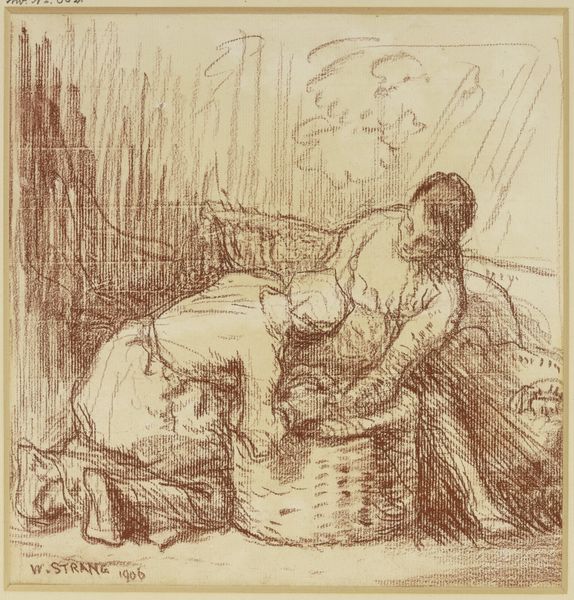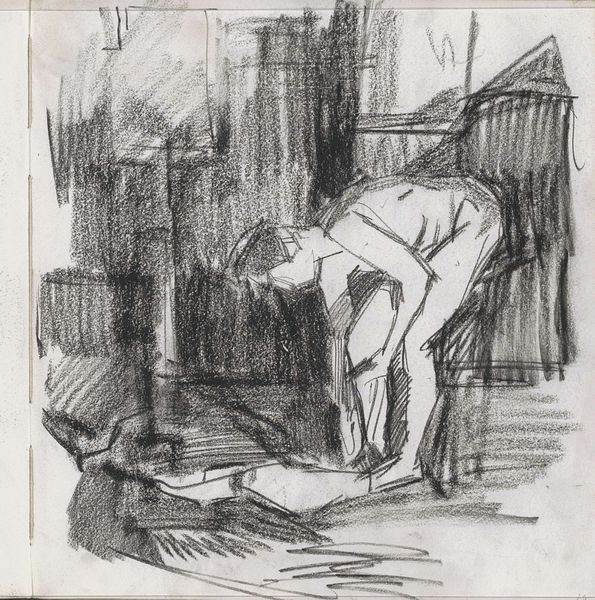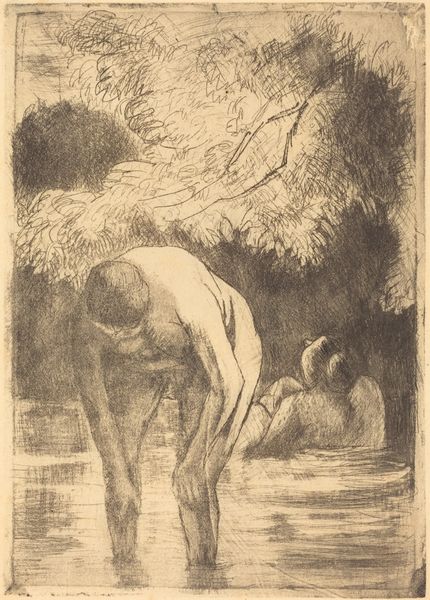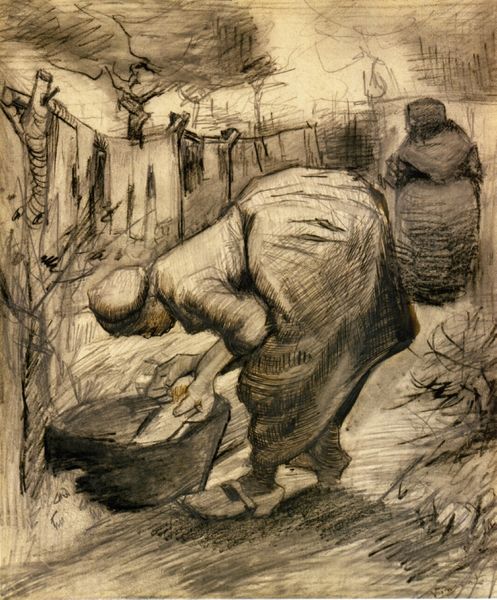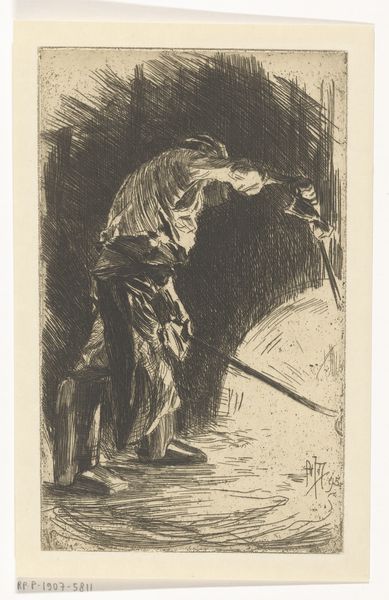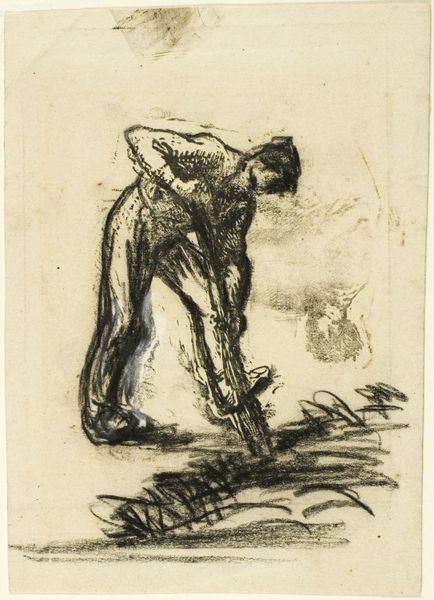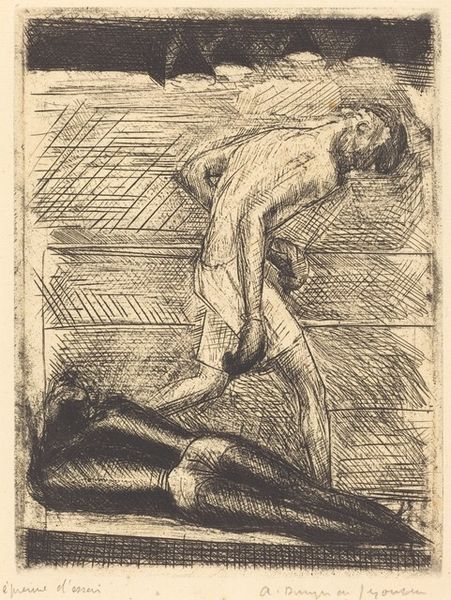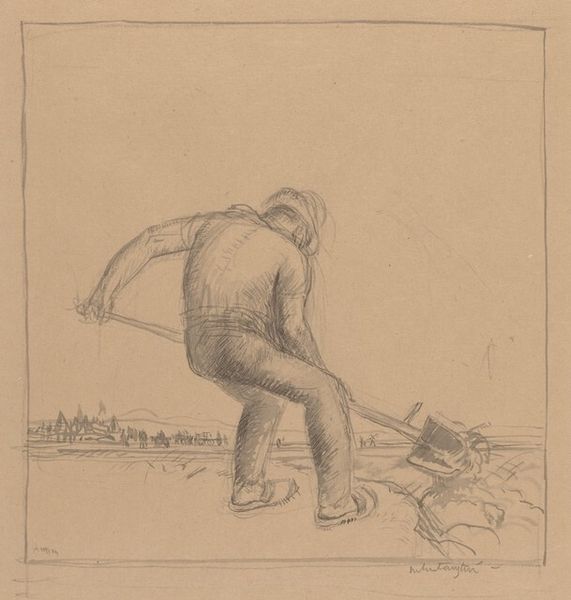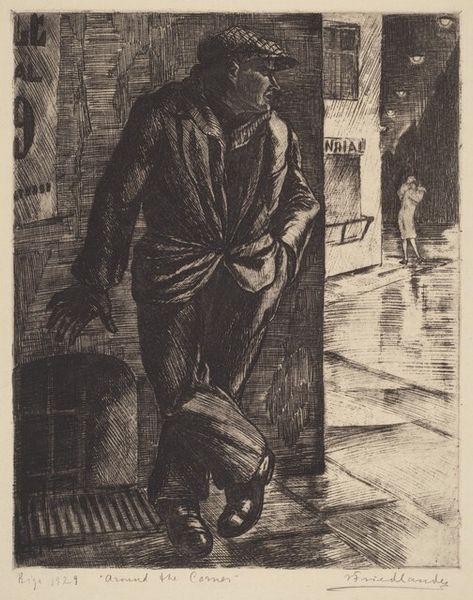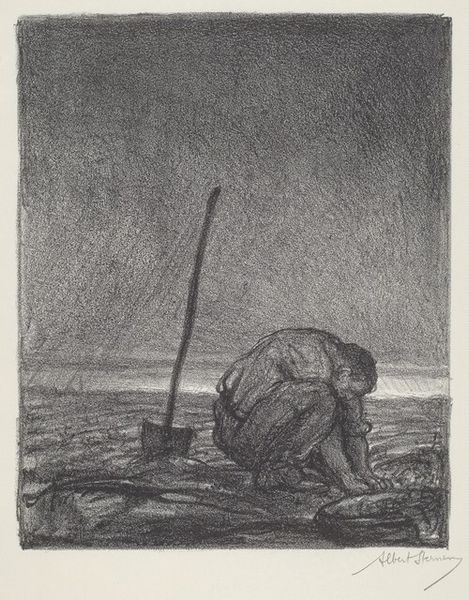
drawing, chalk, charcoal
#
drawing
#
toned paper
#
16_19th-century
#
impressionism
#
pencil sketch
#
landscape
#
charcoal drawing
#
figuration
#
charcoal art
#
pencil drawing
#
chalk
#
genre-painting
#
charcoal
Copyright: Public Domain
Editor: This is "Planteuse de pommes de terre," or "Potato Planter," a drawing by Vincent van Gogh from 1885, rendered with charcoal, chalk, and pencil on toned paper. The somber tonality evokes a feeling of hardship. What compositional elements stand out to you? Curator: Immediately striking is the dominant, hunched figure and the ground plane articulated with rapid, repetitive marks. Consider how the diagonal thrust of the planting tool echoes and amplifies the woman's posture. The entire composition pivots around the central figure; even the background buildings conform to this organization, do you notice? Editor: I do. The lines really guide your eye. But why that angle? Is it meant to express…burden? Curator: Formally, yes. The line, tone and mass, and how they cohere into shapes contribute to an understanding of its aesthetic impact and metaphorical implications. We observe that the artist manipulates visual components to emphasize the arduousness of the task and the weighty stoicism borne by the figure. There is an elegant austerity to the means that are mobilized in the visual articulation of such a scene. What do you make of the background elements, for example? Editor: The starkness of the buildings, they appear as merely geometrical forms with a notable lack of detail… adding to that austere atmosphere. Curator: Precisely. This austere representation, coupled with the restricted tonal palette, further emphasizes the demanding nature of rural life, communicated visually in a drawing about potato planters. Editor: This really highlights how van Gogh uses composition to amplify the meaning of the artwork. I learned a lot about form! Curator: Indeed, by examining how forms relate and create a visual rhythm, we unlock new levels of meaning within the artwork.
Comments
stadelmuseum about 2 years ago
⋮
The 'Potato Planter', from Vincent van Gogh's early phase, belongs to a group of drawings which show individual workers labouring in the fields. It was created in the summer of 1885 in Nuenen, where the impoverished artist had been living in his parents' parsonage since the end of 1883. He found the subjects for his drawings and paintings in real life, in his rural surroundings and among the craftsmen and peasants of Brabant. Van Gogh trod the path of the outsider beyond any official training. His artistic approach was influenced by local artists of the Den Haag School, such as J. Israël, and by the painters of the Barbizon School, especially J.-F. Millet, whose choice of subjects left its mark on Van Gogh's work throughout his life.Van Gogh portrays the peasant woman at close quarters and in a monumentally compact style. The figure, bent forward, presents a massive lower body resting on coarse wooden clogs with space in front for the slender upper body and head. Clear contours mark the outline of the figure. Her volume is conveyed by a lively interplay of modelling, blurred hatching and etched lightening. The powerful arm, stretching from the body to the ground in order to place a potato in the prepared earth, has a compositional pendant in the vertical of the spade, which explains the narrative more directly than the description of the background, as does the basket, which, as a container, repeats the function of the hand holding the tubers.Van Gogh's large-format drawings of individual figures carrying out their work in the fields were a direct reaction to the shortcomings which others and he, too, had noticed in the bodies of the figures in an earlier painting of his, 'The Potato Eaters' (Van Gogh Museum, Amsterdam). He had written to his brother Theo that the figures as a whole were not what the heads had been. In his new drawings, he was starting the figures with the bodies "and I have the impression that this makes them fuller and broader. (...) which I want, namely that everything is round and the form, so to speak, has no beginning or end, but rather creates a harmonious living whole." (Letter to van Gogh's brother Theo van Gogh, ca. 9 May 1885).In 1908, at a time when the first works by van Gogh were being displayed in German museum collections in the Nationalgalerie in Berlin, the painting 'Farmhouse in Nuenen' was also acquired in Paris by the Städelscher Museums-Verein for the Städelsches Kunstinstitut together with this 'Woman Planting Potatoes'. It was followed in 1911 by the late painting 'Portrait of Dr. Gachet' (1890), which was confiscated in 1937.
Join the conversation
Join millions of artists and users on Artera today and experience the ultimate creative platform.
